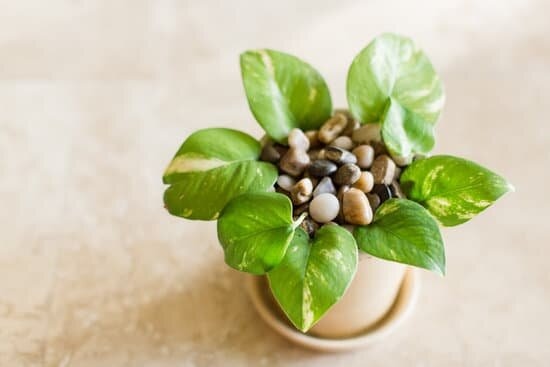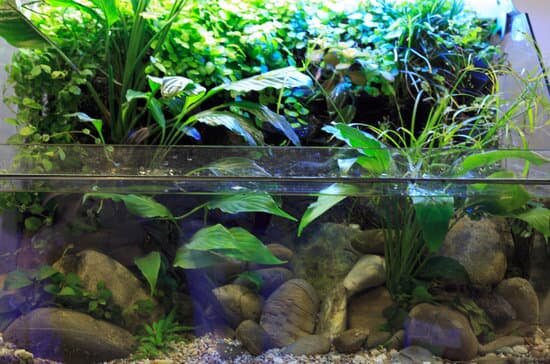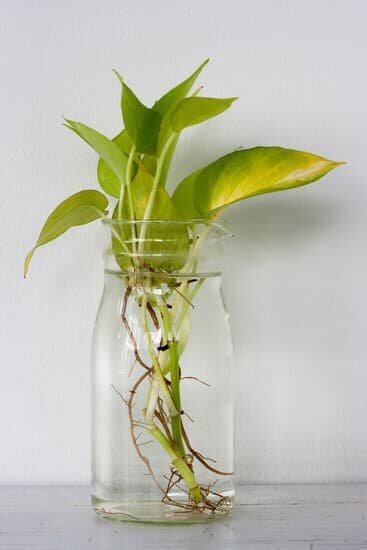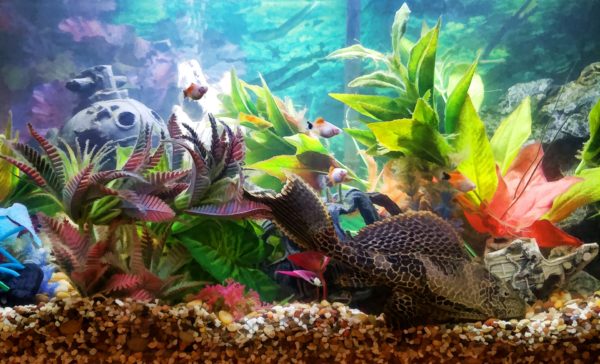Ever wondered why aquarists love aquarium plants so much?
Aquarium plants are loved by aquarists for their ability to absorb nitrogen compounds and carbon dioxides and oxygenate the tank!
Well, if you are new to this business, this article will help you understand what a pothos plant is and how you can use it in your tank. So, make sure you read till the end.
Table of Contents
What is a Pothos Plant?
The Pothos plant is a green and sprawling vine. This vine can grow up to 40 feet in its natural habitat and pretty much the same length indoors too!

The leaves of the pothos plants have a heart-like shape; sometimes, the green color of its leaves is variegated with yellow, white, or even pale-green patterns.
It is pretty easy to grow these plants at home, and you can keep them indoor throughout the year! It grows 12 to 18 inches in a month.
However, you should keep in mind that this plant is pretty toxic to pets!
Information Pothos
- Name: Pothos
- Scientific Name: Epiprenum Aureum
- Family: Araceae
- Type: Vine
- Size: when matured – 20 -40 feet, and 3 – 6 wide
- Exposure: Partial Shade / Full Sun
- Soil Types: well-drained and moist
- pH of Soil: Neutral to Acidic
- Native Zone: Solomon Island, South Pacific
- Also Known As: Golden Pothos, Devil’s Ivy, Devil’s Vine, Hunter’s Robe, Ivy Arum
Benefits of Pothos Plants in Aquariums
There are several benefits of having pothos plants in aquariums. Here we have shared some of its benefits –
Eradicate Nitrates
Like all freshwater aquarium plants that absorb nitrates, this plant is known for its nitrate-absorbing capabilities. However, the pothos has a higher rate of absorbing nitrates than other plants – 20 – 40 ppm.
Whenever there is an increase in nitrate content in the water, your fish may get sick. To save your fish and maintain nitrate levels, add a pothos plant to your aquarium today!
Shade
Some aquarium fish need a bit of shade to live. Fish like the betta and angelfish need a bit of shade to live properly in an aquarium.
Adding a pothos plant will give them their shade and help to imitate their natural habitat.
Removes Algae
The formation of algae is the most common phenomenon in aquariums. The presence of minimal algae is considered to be healthy for tanks.
However, too many algae can cause some serious problems to your fish and affect the water content in the tank. Algae forms when the water has high nitrate content and waste in the tank.
To balance the nitrite, add a pothos plant to the tank. Pothos plants will absorb the nutrients that promote algae formation for their own good, and this will prevent algae formation.
Aeration
Pothos plants promote optimum aeration in the tank.
When photosynthesis takes place in the tank, the carbon dioxide released by the fish has used the plants, oxygenates the tank in return!
And you already know how crucial oxygen is for your fish.
Reconstructs a Natural Habitat
The majority of their fish species love to stay in their natural habits. So, it is important to decorate the tank as to their habitat.
If your tank is based on freshwater fish, then adding some pothos plants might help in reconstructing the natural habit of your fish.
And it is very important for the survival of fish in the tank!
Hiding Spots
Each fish in the tank has a unique personality and behaves differently from other species. Some fish may act territorial, while some get aggressive and start fighting.
This is why it is essential to provide your fish with some hiding spots where they can rest and stay safe. For this purpose, you can add some pothos plants.
When hung, their roots grow faster. These roots can act as a shelter or a hiding spot.
The Pothos is one of those aquarium plants that do not need substrate. However, when planted in the aquarium, it can help the fish by providing them with ideal breeding places, and its leaves can act as a guard.
Keeps the Substrate in Its Place
It does not matter if you keep this plant in water or soil. It will grow well.
If you plant this in the tank, no doubt it will hold the substrate in place. It helps in facilitating aesthetic and anaerobic processes.
Are Pothos Plants Good for Aquariums?
The pothos plant is acknowledged for its air-cleansing abilities. Many veteran aquarists use these plants to balance their nitrite levels in their tanks. As you have already read about the benefits of the pothos plants in the earlier section, do you think that these plants are not appropriate for aquariums?

Well, it could be a problem if these plants get too big in size, but do not worry, I have a quick fix.
If the plant gets too big, just trail its long branches along with the limits of your aquarium. That’s it. This fix will not help you resolve the problem but also help you add an aesthetic touch to your aquarium.
Are Pothos Plants Toxic to Fish?
Many fishkeepers think if this plant is toxic for cats and dogs, it might be toxic for fish too. Well, if you are thinking of getting some pothos plants, go ahead and get them.
The pothos plants are pretty safe for your fish in the aquarium. Till today, there has been a single report that states pothos are toxic to fish.
In fact, they provide good oxygenation, providing the fish with hiding spots and places for breeding!
So let no one tell you that these plants are toxic to fish.
Can Pothos Grow Underwater?
If you think pothos can grow underwater, you are partially right. Let me tell you why.

Pothos plants can efficiently grow in water unless they are fully submerged in it. If the plant gets fully submerged, including its leaves, unlike every aquatics plant, it will not be able to absorb the nutrients from the water.
It is a must for these plants to have a couple of their leaves hanging out of the aquarium.
If you wish to plant the pothos in the tank, ensure that it has sufficient roots to hold the substrate! Also, make sure the vine is long enough to hang out from the tank.
However, if you have fish that won’t vent their aggression on the plant, you can let the stems and roots float in the aquarium.
Can Pothos Survive in a Saltwater Aquarium?

Pothos plants will not survive for long if kept in a saltwater aquarium. Pothos plants are hardy plants and may be able to tolerate a bit of saltiness.
The bottom line is – pothos cannot survive in a saltwater aquarium.
How to Use Pothos in Aquariums
Setting up pothos plants in your tank is not difficult—all you have to be cautious about is if you have plant-eaters in the tank.
If you have even one plant-eating fish, consider using a hang-on-back filter. Also, you have to place your plant away from the tank’s motor compartment. If not done correctly, there are chances for the roots to end up clogging the motor.
If you have fish that will not disturb the plant, put it directly in the tank. But, its leaves should hang out of the tank.
That simple it is.
Can You Cut Off Pothos Plant Roots?
Yes, you can easily cut off the roots using a clean and razor-sharp knife. You should cut the roots because if you don’t, it is going to fill your entire aquarium.
Just make sure you do not cut all its roots because then it is going to have a really hard time fetching all the necessary nutrients.
Drawbacks of Keeping Pothos in Aquarium
As the pothos plants will serve your tank with numerous benefits, but there are some drawbacks as well. The drawbacks are –
- Pothos plants will draw a lot of nutrients, so there is a high chance for your fish to die because of nutrient deficiency.
- As you know, the roots of pothos grow faster than any other aquatic plant. If you do not deal with it in time, then it’s thick and long roots will take over your entire aquarium.
How to Use the Pothos Plant as a Natural Aquarium Filter
Many veteran fishkeepers have been using pothos plants as a natural aquarium filter, so why should you be left out?
This is how you should use the plant as a natural aquarium filter –
Remove the plant from the soil, take a few cuttings from the plant. If you have healthy pothos, you will get a handful of cuttings.
Pothos is known as devil’s ivy because it is hardy and it is pretty hard to kill. Now, you can directly put the stems into the water, and the roots will grow faster as there is better availability of nutrients in the aquarium.
You may use a suction cup and an airline tube to hold the pothos plant in place, and you might not want it to fall in the tank, especially if you have plant-eaters.
Conclusion
Now that you have read this write-up here, I hope you know the benefits of having a pothos plant in an aquarium.
They have numerous benefits but have two major drawbacks. If you are able to maintain your plant well, it is worth growing pothos in your aquarium.
Get yours today!
